Blue Beauty: Grow Delphinium in Your Flower Garden
Updated: Jan. 09, 2024
If you're a fan of blue flowers in the garden, you're going to want to start growing delphinium, also known as larkspur, as soon as possible!
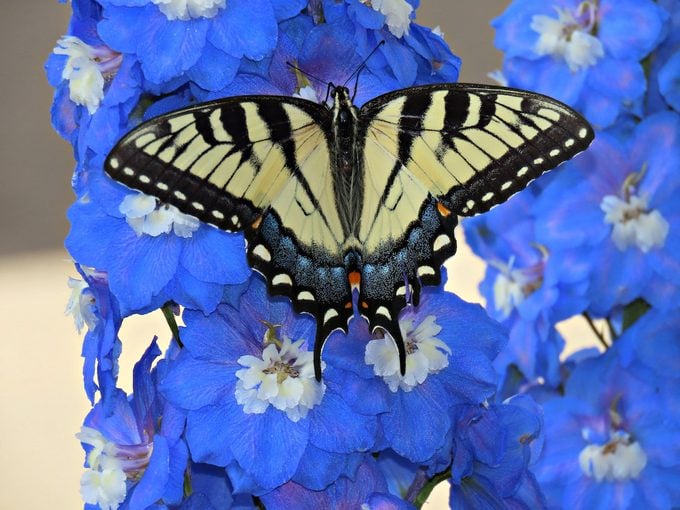
My favorite flowers in the garden are often the blue ones. There’s something about seeing this cool hue mixed among the brighter yellows, reds, and oranges that always makes me fall in love. One of the truest blues you can find in a flower garden comes from delphinium, especially some of the newer cultivars on the market. If you love blue too, you’ll want to give growing delphiniums (also known as larkspur) a try. They can be a little tricky, so here are a few tips.
On This Page
Delphinium Care and Growing Tips
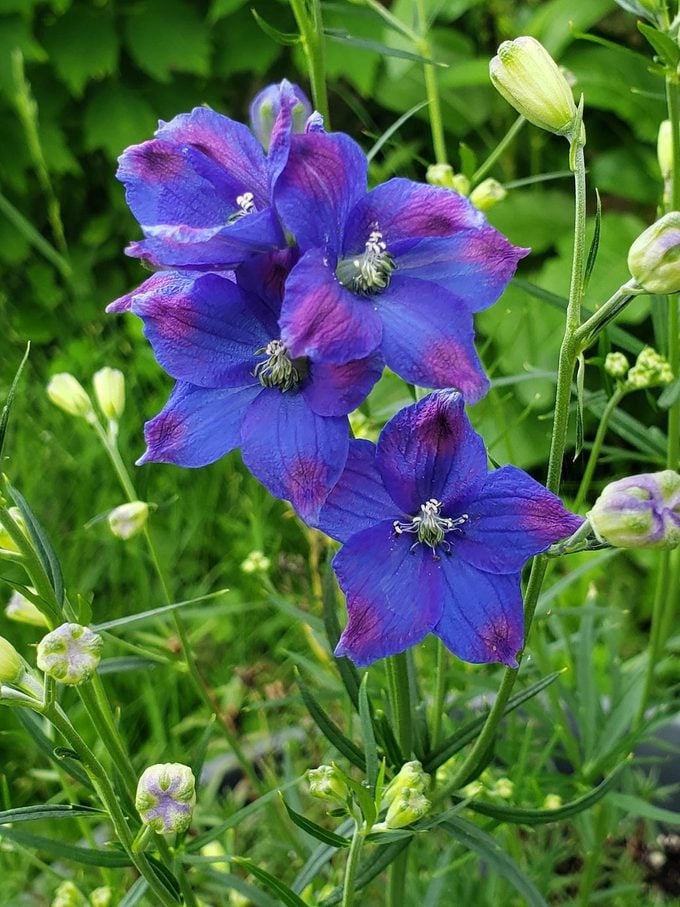
- Scientific name: Delphinium spp.
- Common name: Larkspur
- Zones: 3 to 7
- Light needs: Full sun
- Well-draining soil
- Attracts: Hummingbirds, butterflies, bees
Although it’s a bit picky, larkspur is well worth the effort when spires of blue flowers reach for the sky. Delphiniums require full sun and organic, moist, well-draining soil. Don’t allow the soil to dry out. Mix in compost before planting and fertilize regularly.
Larkspur plants grow 2 to 6 feet tall. This towering treasure makes a statement at the back of a mixed border, as a vertical accent or in a container. Stake taller varieties to stand up to wind and rain.
Cut delphiniums back hard after their first blooming to encourage a second late summer or fall bloom. Remove spent flower stems completely. This is often considered the trick to growing delphiniums successfully.
Delphiniums are happiest with cool moist weather. Hot dry summers are often their downfall. Because of this, many gardeners prefer growing delphiniums in the spring and early summer as annuals, replacing them each year. They can be grown as perennials in zones 3 to 7. In cooler zones, grow delphiniums in full sun. In warmer climates, afternoon shade will help them endure hotter weather.
Meaning of Delphinium
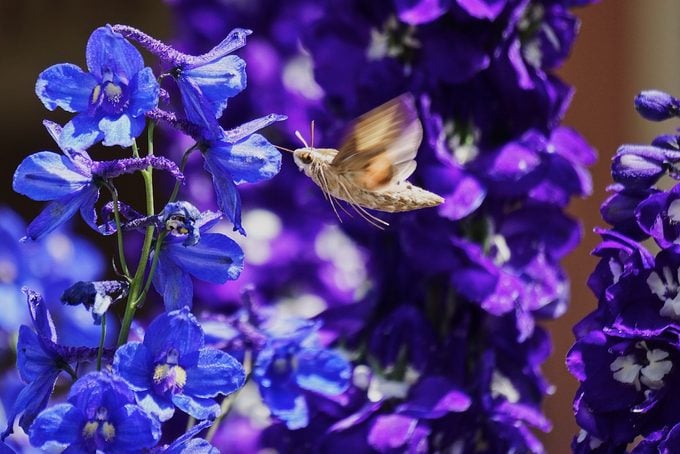
The word delphinium means “dolphin-like,” and refers to the graceful shape of the nectary at the base of each bloom. Delphiniums are also known as larkspur in many places. This also refers to the shape of the bloom, which is thought to resemble the claw on a lark’s foot.
Pollinator Benefits
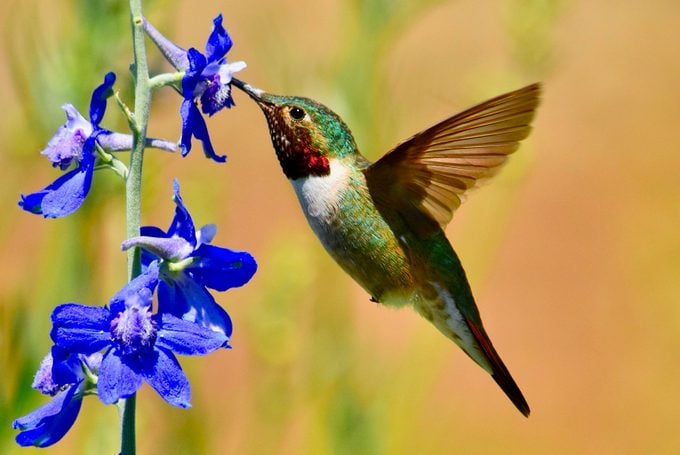
With dozens of blooms on each stem, it gives hummingbirds plenty of nectar sources to share with butterflies and other bugs, too.
However, be careful when furry friends and children are around. This plant, particularly the sprouts, is toxic to pets, livestock (and people).
Delphinium Varieties
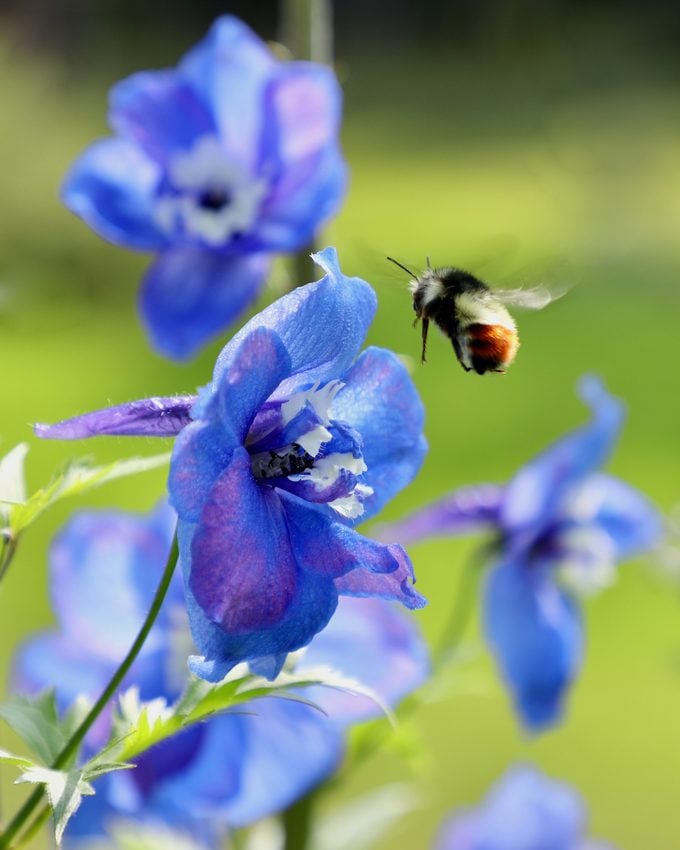
Delphiniums are a large family of over 300 species. They can be found throughout the northern hemisphere, and on high mountains in Africa. They come in a range of colors, including pink and white, but most people think of the blue varieties when they think of this flower. Many types are quite tall and become droopy with rain or wind, but newer dwarf varieties stand up to those challenges pretty well.
Some varieties, like the Summer Blues, are a lot bluer than others. For heat tolerance, try the Blue Mirror cultivar. Dasante Blue is a great choice for a cutting garden. Grab your shears and snip a few stems to bring a little beauty to your house.
Native Larkspur
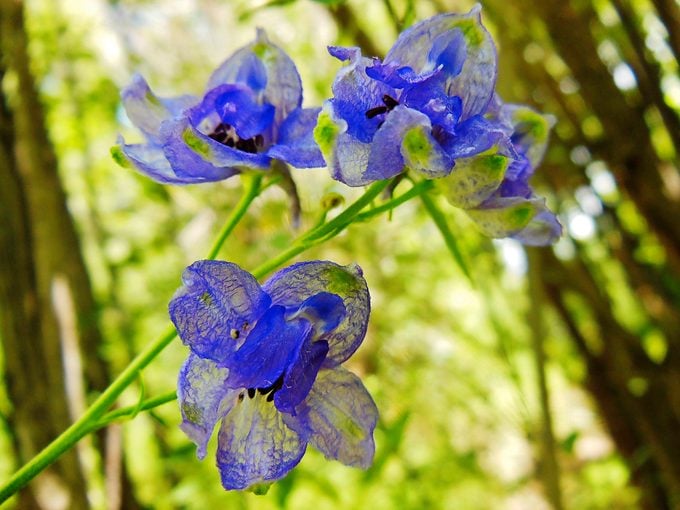
“I spotted this delicate flower (above) that is kind of transparent and a very pretty blue-purple color. What could it be?” asks Birds & Blooms reader Kit Warner of Mule Creek, New Mexico.
Horticultural expert Melinda Myers says, “You’ve found native larkspur, most likely Delphinium nuttallianum. This particular larkspur is more common in open areas and dry conditions. There are several other very similar delphiniums that are distinguished by their location and more subtle features. As the blue petals pass their peak, they start to fade and develop the transparency you’ve captured in this photo.”
Backyard Tip: Delphinium exaltatum, or tall larkspur, is native in the East and sturdy enough to grow in Zones 4 to 8.
Sources
- Melinda Myers
- U.S. Department of Agriculture
- Ball Horticultural Company
- U.S. Forest Service
- North Carolina State Extension




















